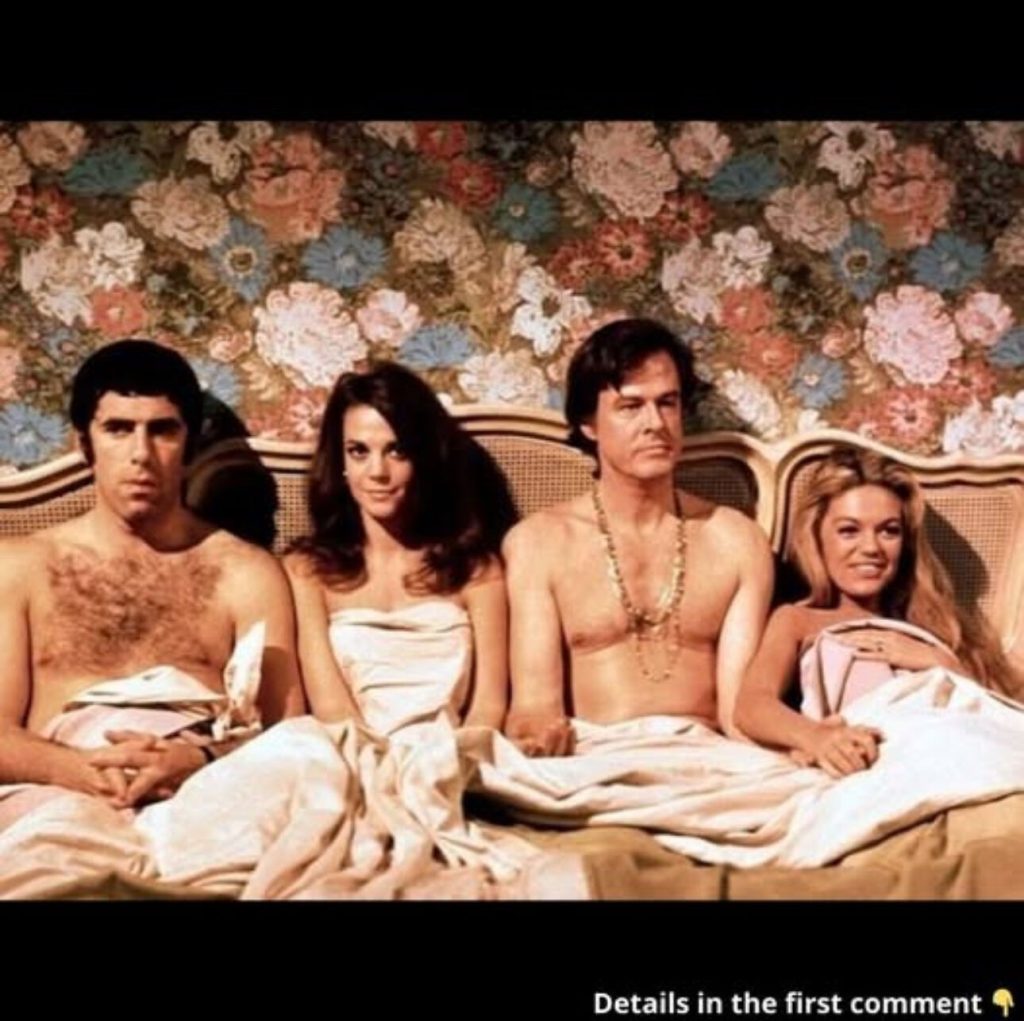In 1969, Bob & Carol & Ted & Alice made its unforgettable debut, shaking up traditional views on marriage and relationships with bold humor and an unapologetic exploration of taboo subjects. Directed by Paul Mazursky, this comedy-drama became a cultural phenomenon, challenging societal norms and sparking discussions that remain relevant today. The film, a reflection of the rapidly changing attitudes of the late 1960s, offered a candid and satirical take on love, fidelity, and the evolving dynamics of modern relationships.

At its core, Bob & Carol & Ted & Alice is a film about two couples—Bob and Carol Sanders, played by Robert Culp and Natalie Wood, and their close friends, Ted and Alice Henderson, portrayed by Elliott Gould and Dyan Cannon. The story begins with Bob and Carol attending a weekend retreat where they are introduced to the principles of radical honesty and emotional openness. Inspired by this newfound philosophy, they return home eager to apply these ideas to their marriage, encouraging transparency and personal growth. However, their enthusiasm quickly begins to test the limits of their friendship with Ted and Alice, who are far more conventional in their beliefs about marriage and intimacy.
What made the film particularly groundbreaking was its fearless approach to topics that, at the time, were considered taboo in mainstream cinema. Bob & Carol & Ted & Alice did not just hint at extramarital affairs and open relationships—it tackled them head-on, portraying the complexities, insecurities, and moral dilemmas that arise when traditional marital structures are questioned. The film’s humor was sharp and satirical, using irony and wit to highlight the absurdities of societal expectations regarding monogamy and sexual freedom.
The late 1960s was a time of social upheaval in America. The counterculture movement, the sexual revolution, and the rise of progressive attitudes toward relationships were all in full swing. Mazursky’s film captured this shifting landscape with precision, mirroring the broader cultural discussions about personal freedom, emotional authenticity, and the evolving roles of men and women in romantic partnerships. The film resonated with audiences because it presented characters who were neither villains nor saints but rather flawed, curious, and deeply human individuals trying to navigate the changing tides of morality and relationships.
One of the most talked-about aspects of the film was its climactic scene, in which the four characters, after much tension and speculation, find themselves in bed together, contemplating the possibility of a group experience. Rather than portraying this moment as purely scandalous or comedic, the film uses it to explore the deep-seated fears and vulnerabilities that come with challenging traditional notions of love and loyalty. Instead of crossing the line into full-on hedonism, the characters ultimately reaffirm their bonds, realizing that their relationships mean more than fleeting indulgences.
The performances in Bob & Carol & Ted & Alice were widely praised. Natalie Wood brought a perfect balance of charm and depth to Carol, capturing the enthusiasm and emotional complexity of a woman eager to embrace new ideas. Robert Culp’s portrayal of Bob was equally compelling, as he embodied the confident yet conflicted husband torn between his newfound philosophy and the realities of human emotions. Elliott Gould’s performance as Ted provided a humorous counterpoint, portraying a man who is both fascinated and terrified by the prospect of stepping outside his comfort zone. Meanwhile, Dyan Cannon’s Alice, with her mix of skepticism and vulnerability, served as the audience’s anchor, voicing the concerns and doubts that many viewers likely shared.
Beyond its strong performances and witty dialogue, the film’s success was also attributed to Mazursky’s direction and screenplay, which he co-wrote with Larry Tucker. Their script was both insightful and provocative, blending humor with genuine emotional depth. The film did not push an agenda but rather presented scenarios that invited audiences to think, question, and engage in discussions about love, commitment, and personal boundaries.
Upon its release, Bob & Carol & Ted & Alice received critical acclaim and became a box office hit. It earned four Academy Award nominations, including Best Supporting Actor for Elliott Gould, Best Supporting Actress for Dyan Cannon, Best Original Screenplay, and Best Cinematography. The film’s success was a testament to its ability to strike a chord with viewers who saw their own fears, desires, and relationships reflected in its characters.
Over the decades, Bob & Carol & Ted & Alice has maintained its status as a cultural touchstone. While some aspects of the film may feel dated by today’s standards, its core themes remain as relevant as ever. Discussions about open relationships, emotional transparency, and the evolving nature of marriage continue to be explored in contemporary cinema and television. The film paved the way for later works that delved into similar themes, from Annie Hall and Kramer vs. Kramer to modern explorations of relationships in shows like Big Little Lies and Masters of Sex.
What sets Bob & Carol & Ted & Alice apart is its refusal to offer easy answers. Rather than painting a black-and-white picture of relationships, it embraces the gray areas—the doubts, the contradictions, and the messy, unpredictable nature of human connection. It acknowledges that love and marriage are not static concepts but rather ever-evolving journeys that require constant negotiation and self-discovery.
Even today, the film serves as a mirror, reflecting back to audiences the same fundamental questions that have persisted for generations: What does it mean to be faithful? Can personal growth coexist with long-term commitment? How do we balance individual desires with shared responsibilities in a partnership? These questions remain at the heart of countless discussions about modern love, making Bob & Carol & Ted & Alice as thought-provoking now as it was over 50 years ago.
As we look back on this iconic film, it’s clear that its impact extends far beyond its initial release. It challenged norms, provoked conversation, and provided a glimpse into the shifting landscape of love and relationships. In doing so, Bob & Carol & Ted & Alice cemented its place in cinematic history—not just as a film about the late 1960s, but as a timeless exploration of human connection in all its complexities.





